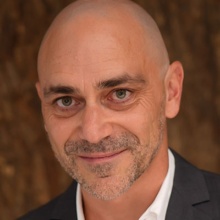As part of his appointment as an IEEE Communications Society Distinguished Lecturer for the term 2023-2024, Maxime Guillaud, senior researcher at INRIA in Lyon, France, will present a lecture at our institute. INUE staff members and students alike are kindly invited to come attend his presentation entitled
Towards Practical Massive Random Access
on February 9th 2024, 11:00am, INUE "Shannon" lecture hall V47.2.314.
Abstract: In multi-user wireless communications, random access departs from the classical set-up of multiple access in the fact that the number and identity of the active transmitters are unknown to the receiver (typically because the sporadic nature of the traffic does not allow for coordination between transmitters). This is a significant departure from the well-understood multiple access schemes (including non-orthogonal multiple access, NOMA). Random access arises e.g. in massive internet-of-things, ultra-reliable and low-latency communications, and non-terrestrial networks applications. This talk will outline why, compared to multiple access, multi-user decoding in random access scenarios is markedly more difficult, and requires to revise some of the basic assumptions that underpin modern multi-user communications systems, such as the pre-existence of synchronization and timing offset compensation, or centralized assignment of pilot sequences. We will focus on massive random access, which explicitly considers the high-contention regime, i.e. the case where the number of simultaneously active transmitters can be very large, and discuss some of the practical waveforms and coding approaches that have been proposed in practice to solve this problem.
Presenter Bio: Dr. Maxime Guillaud is a senior researcher at Inria, the French national research institute for digital science and technology, in the MARACAS team in Lyon. He received the PhD from EURECOM in 2005. Before joining Inria in 2023, Dr. Guillaud has held research positions in both academia and industry, with Lucent Bell Laboratories (now Nokia) in the USA, the FTW research center and Vienna University of Technology in Austria, and Huawei Technologies in France. He is an expert on the physical layer of radio access networks, including transceiver algorithms, channel modeling, machine learning, and modulation design for non-coherent and multiple access communications. He has authored over 90 research papers and holds 18 patents.


